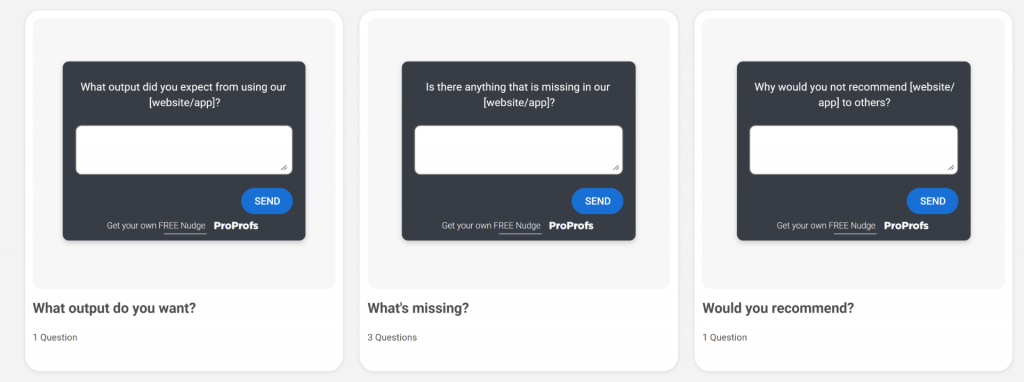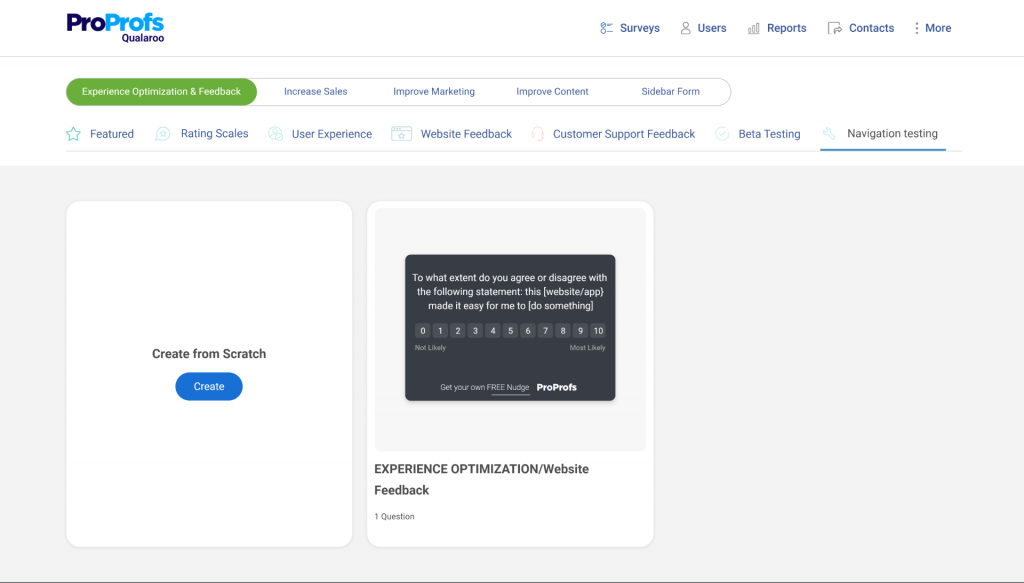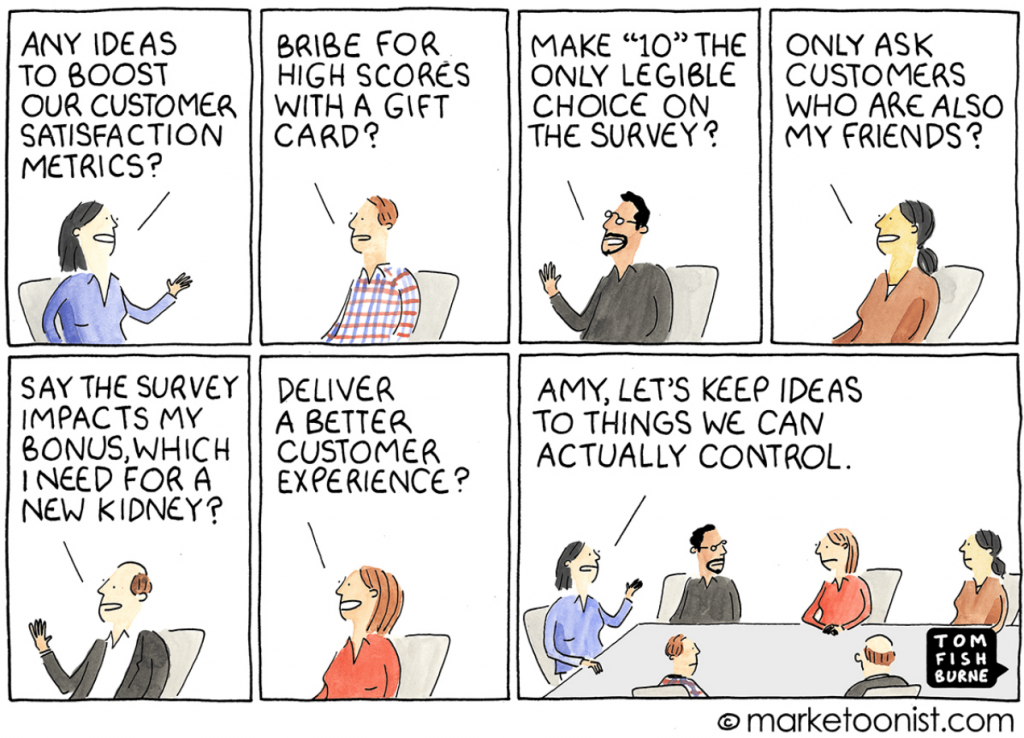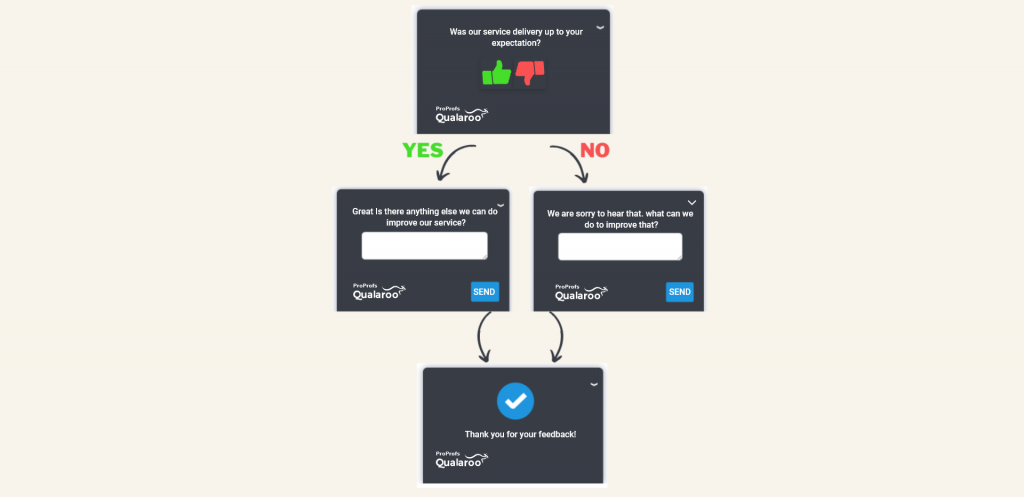When redesigning your website, it’s crucial to obtain feedback from your users before, during, and after the process to ensure your updated website meets their needs, expectations, and preferences.
One of the best ways to collect user feedback is to conduct a website redesign survey.
We’ll share 54 effective questions you can use in your website redesign survey to get valuable insights from your users. We’ll also explain why each category is important, along with top best practices.
What Is a Website Redesign Survey?
Website redesign surveys provide valuable feedback from visitors on areas that need improvement in website design, usability, and functionality.
They help track the impact of a website redesign on key metrics such as traffic, conversion, retention, and satisfaction. Website redesign surveys can be conducted at different stages of the project and tailored to specific phases to enhance website user experience and drive conversions.
Website Redesign Survey Questions to Ask for a Seamless Overhaul
We’ve divided these questions into several categories based on their focus areas so you can easily collect feedback on different aspects of your website.
Website Redesign Survey Questions on User Satisfaction:

User satisfaction is key to measuring the success of your website redesign. You can use a website redesign questionnaire to assess user satisfaction, asking about overall satisfaction, strengths and weaknesses, and comparisons with competitors. Here are some examples of survey questions for a website to assess user satisfaction:
- How satisfied are you with our website?
- On a scale of 0 to 10, how likely are you to recommend our website to a friend or colleague?
- What are the main reasons for your rating?
- What are the aspects of our website that you like the most?
- How satisfied are you with our site’s speed?
- How well does our current website align with your expectations regarding our brand and offerings?
- Were you able to find the information you were looking for on our website?
- How likely are you to return to our website based on your current experience?
Also Read: 30 Best Customer Satisfaction Survey Questions
Website Redesign Survey Questions to Evaluate Website Navigation:

Navigation is a vital aspect of website design. It refers to how easily a user can move around and find what they are looking for on your website. Here are some survey questions to evaluate the navigation experience of your website:
- How easy was it to navigate our website?
- Did you find the layout of our website to be intuitive?
- Were you able to understand the labels on our website easily?
- Did you find any part of our website to be confusing or difficult to use?
- How would you rate the search functionality on our website?
- Do you find our search feature useful?
- Did you encounter any broken links or pages that didn’t load properly?
- How would you rate the organization of information on our website?
FREE. All Features. FOREVER!
Try our Forever FREE account with all premium features!
Website Redesign Survey Questions to Evaluate Mobile Responsiveness
With the increasing use of mobile devices to access websites, it is essential to ensure that your website is mobile-responsive. Here are some website redesign survey questions to evaluate the mobile responsiveness of your website:
- Have you visited our website on a mobile device?
- How would you rate your experience when visiting our website on a mobile device?
- Did you encounter any issues when accessing our website on a mobile device?
- How easy was it to navigate our website on a mobile device?
- How well did our website fit your mobile device’s screen?
- How would you rate the speed and performance of our website on a mobile device?
- Were you able to easily find and click on links and buttons on our website when using a mobile device?
- Did you find any features on our website that didn’t work properly on a mobile device?
- How would you rate the readability of the text on our website when viewed on a mobile device?
- How likely are you to return to our website on a mobile device?
Recommended Read: 25+ Excellent UX Survey Questions You Need to Ask
Website Redesign Survey Questions to Identify User Needs and Preferences:
It’s important to understand your users’ needs and preferences to redesign your website effectively. This involves identifying what they want and expect from your site and how they prefer to interact.
You can use survey questions to gather this information and tailor your website accordingly for a satisfying user experience.
Here are some examples of website redesign survey questions to identify user needs and preferences:
- What are the main goals or tasks you want to accomplish on our website?
- What are the features or functionalities you value the most on our website?
- What are the features or functionalities that you would like to see added or improved on our website?
- What are the aspects of our website that you dislike or find frustrating?
- How do you prefer to access our website? (e.g., desktop, mobile, tablet, etc.)
- How do you prefer to consume our content? (e.g., text, video, audio, etc.)
- Which features do you wish we had?
- Which other websites do you trust for industry-related information?
- How likely are you to engage with long-form content?
- What would you like to see on our new website?
- Are you able to easily share content from our website on social media platforms?
- Do you have any other suggestions?
Website Redesign Survey Questions to Assess Your UI:
The design of your website plays a crucial role in creating a positive user experience. It refers to how the website looks and feels to the user. Here are some survey questions to evaluate the design of your website:
- How would you rate the overall appearance and layout of our website?
- On a scale of 0–10, how visually appealing do you find our new site?
- How can we make our website more user-friendly?
- Are the call-to-action (CTA) buttons clear and compelling?
- How well does the website design align with our brand identity and value proposition?
- Is the font size and style easy for you to read?
- How well does the design guide your attention to important content?
Website Redesign Survey Questions to Ask After Redesign
Here are a few questions you can ask visitors after the website redesign:
- Have you noticed any changes since the last time you visited our site?
- On a scale of 0–10, how visually appealing do you find our new site?
- Is the new font size and style easy for you to read?
- How well does the new design align with our brand identity and value proposition?
- How confident are you in the accuracy of search results on the redesigned website?
- On a scale of 0–10, how likely are you to recommend the redesigned website to a friend or colleague?
- How does your overall satisfaction with the redesigned website compare to your experience with the previous version?
- Have you experienced any challenges in completing tasks or goals on the redesigned website?
- How would you rate the effectiveness of the CTAs in guiding you through the website?
Next Read: 13 Ways to Collect Customer Feedback for Your Website
FREE. All Features. FOREVER!
Try our Forever FREE account with all premium features!
Benefits of Website Redesign Surveys
Obtaining feedback from your website users about its design, functionality, and overall user experience can help you identify pain points, areas for improvement, and user preferences. But the advantages go beyond that.
Collect valuable User Insights
User feedback helps you discover what users are looking for, what they are struggling with, and what they are satisfied with. It even provides you with insights that can inform your redesign process and help you make better decisions. You can use user feedback to validate assumptions, test hypotheses, and measure outcomes.
User-Centric Design
Conducting website redesign surveys helps you create a more user-centric website. This approach puts the user at the center of the design process and involves understanding their needs, goals, and behaviors and designing a website that meets them.
Creating a user-centric website leads to improved user engagement, satisfaction, and conversions. It helps you build trust, loyalty, and advocacy with your users, increasing retention and revenue.
Problem Identification
Surveys can help you pinpoint and address issues on your website that may negatively impact your users’ experience. These issues range from navigation difficulties and confusing layouts to broken links and other glitches or errors.
Source: Tenor
By using a survey tool like Qualaroo, an online survey software, to ask open-ended questions, you can get a sense of how frequently and severely these problems occur and how they affect user behavior and satisfaction. Identifying these problems can help prevent future issues and ensure quality and reliability.
Data-Driven Decision-Making
Utilizing surveys to collect user data is an effective way to obtain quantitative and qualitative insights into your website.
You can use this data to identify patterns, preferences, and trends, which can be useful in guiding your web design decisions.
Data-driven decision-making helps you create a website based on facts, not opinions. It enables you to avoid guesswork, biases, and errors, resulting in a more accurate, relevant, and effective website.
Here’s a related one for you: 26 Common Types of Survey Errors and How to Correct Them
Increased Customer Satisfaction
Involving your users through surveys in the redesign process shows that you value their opinions and feedback. This demonstrates your commitment to meeting their needs and preferences and creating a website they will truly enjoy.

Source: Marketoonist
Such an approach can lead to several positive outcomes for your business, including increased loyalty, customer retention, and referrals. It can also generate positive word-of-mouth, reviews, and testimonials, enhancing your brand experience, reputation, and credibility.
Competitive Advantage
You can create a more engaging, useful, and valuable website for your audience by conducting surveys to better understand your users and their pain points. This will allow your website to stand out and provide a superior online experience.
Having a competitive advantage aids in attracting, retaining, and growing your customer base while increasing your market share and profitability. It also helps to establish a strong brand identity and awareness and a loyal and engaged community.
10 Best Practices for Creating Engaging Website Redesign Surveys
When creating engaging website redesign surveys, consider the following best practices:
- Keep Surveys Short: Aim for a concise survey that can be completed within a few minutes. Long surveys can lead to survey fatigue, resulting in incomplete or rushed responses.
- Use Clear and Specific Questions: Frame questions in a way that is easy to understand and relate to the website experience. Avoid ambiguity and ask specific questions about different aspects of the website’s design, navigation, functionality, and content.
For instance, instead of asking, “How do you feel about the information on our website,” consider asking, “How easy was it to find the information you were looking for on our website?”
- Utilize Branching Logic: Platforms like Qualaroo offer skip and branching logic, where follow-up questions are based on the respondent’s previous answers.It helps tailor the survey experience, ensure that participants are asked relevant questions, and reduce the survey abandonment.

- Choose Different Question Types: Use a mix of question types like multiple-choice, dichotomous, star rating, Likert scale, and open-ended questions.
Closed-ended questions provide quantitative data that can be easily analyzed, while open-ended questions give detailed feedback and deeper insights into user perspectives and emotions. This variety keeps respondents engaged and offers different perspectives for analysis.
- Collect Emotional Insights: With a user experience tool like Qualaroo, you can utilize its sentiment analysis feature to automatically evaluate customer sentiments from text-based feedback about various aspects of your website.
- Use Visual Aids: Visual aids can enhance comprehension and improve the accuracy of feedback. You can use Qualaroo to add media to your survey and help participants recall specific areas or features on the website.
- Offer Incentives: Consider offering incentives, such as discounts or freebies, to increase survey participation and completion rates. Incentives can motivate users to provide thoughtful and honest feedback.
- Conduct A/B Testing: Consider performing A/B testing to gather feedback on different design concepts, layouts, or content variations.
Qualaroo can help you target different website variations and collect contextual feedback from your users. You can easily compare the responses of users who see different versions of your website and measure the impact of your changes.
By following these best practices, you can create engaging website redesign surveys that provide valuable insights for improving the user experience.
Website Redesign Survey: A Proven Way to Guide Your Redesign Process
Conducting a website redesign survey is a great way to get user feedback and improve your website.
You can use these questions as they are or modify them to suit your specific website and audience.
Combining the survey data with the website data gives you a comprehensive view of your users’ feedback and uses it to inform your website redesign process. It helps prioritize the areas of improvement, test your design decisions, and measure the impact of your website redesign on your users and your business.
To make the most of your survey results, you can leverage tools like Qualaroo to create and distribute your survey and analyze the responses for actionable insights.
Frequently Asked Questions
What should be included in a website redesign?
A website redesign should include the following steps:
- Setting clear and quantifiable goals.
- Evaluating your current site and its performance.
- Identifying your most valuable pages and user segments.
- Analyzing your competitors.
- Listing what needs to change.
- Choosing a website platform.
- Deciding who will redesign, test, and launch the new design.
- Improving it over time.
What is the difference between a website refresh and a redesign?
A website refresh typically involves minor updates and improvements to an existing website, such as updating content, reorganizing information, or adjusting the design elements.
On the other hand, a website redesign involves a more significant overhaul, including changes to the website's structure, functionality, design, and user experience. A redesign often requires more extensive planning and implementation compared to a refresh.
How do you know if your website needs a redesign?
Several signs indicate that a website may need a redesign. These include outdated aesthetics, poor user experience, slow loading times, high bounce rates, declining conversions, and not being mobile-friendly.
Conducting a website redesign survey can help gather feedback from users, identify pain points, and determine if a redesign is necessary to meet user expectations and achieve business goals.
FREE. All Features. FOREVER!
Try our Forever FREE account with all premium features!

 We'd love your feedback!
We'd love your feedback! Thanks for your feedback!
Thanks for your feedback!

